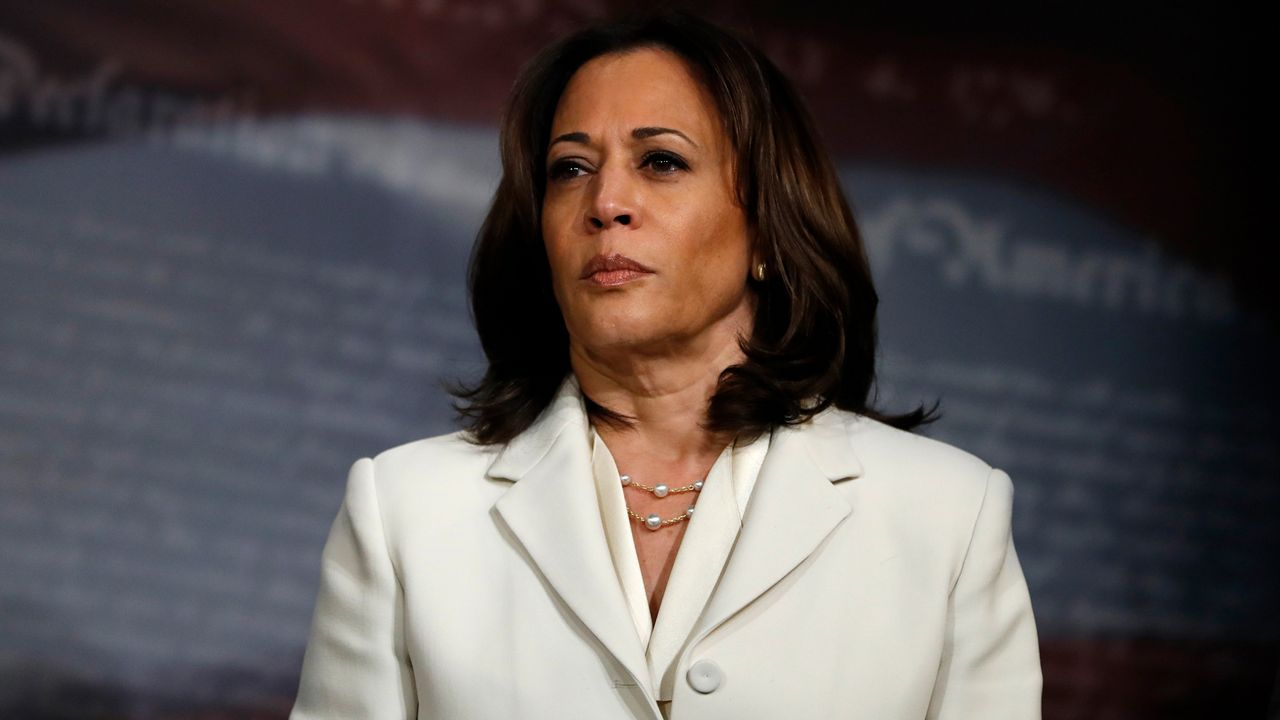In an early presidential campaign video, Kamala Harris describes how, as a child, she watched in pain as people discredited her mother for her heavy Indian accent.
It’s a moment Chanda Parbhoo said almost every South Asian – or any other immigrant group in American – could relate to.
"I saw the same thing happen to my father," said Parbhoo, whose family moved to Texas in 1978. Parbhoo, who is the founder of a South Asian American Voter Empowerment of Texas, hopes Harris' story will be the inspirational push needed to get more of Texas' growing South Asian population registered to vote.
Harris, the Democratic candidate for vice president, identifies as being both Black and South Asian. Her father, who immigrated to the U.S. from Jamaica, met her mother, a student from India, at a California civil rights march in the 1960s.
Whether they support her politics or not, Texas’ South Asian community “connects to these stories of what it’s like to grow up as the child of an immigrant,” Parbhoo said.
When she gives her address tonight during the Democratic National Convention, the state’s South Asian community will be paying close attention to Harris’ historical nomination.
After Joe Biden announced he had chosen Harris as his running mate, Parbhoo said her organization was flooded with calls from volunteers wanting to get involved in registering Asian American voters in Texas. Many of them said they had been inspired by Harris’ nomination, Parbhoo said.
Asians are the fastest-growing minority group in Texas, and South Asians from India, Pakistan and other parts of the subcontinent are helping to drive their importance in state politics.
Texas’ Asian population grew 49 percent from 2010 to 2018, far surpassing other minority groups in the state, including Hispanics, according to the U.S. Census Bureau.
The state’s Hispanic population, the largest minority in Texas with an estimated 40 percent of the state’s 29 million people, grew by 20 percent in the same time period.
Asian American participation in politics is growing, too. Comparing 2014 and 2018 voting trends, Texas’ eligible Asian voters increased by 25 percent, according to the U.S. Census Bureau. The voting block’s turnout at the polls was particularly impressive, with a 174 percent increase from 2014 to 2018.
Asian Americans are running in Texas races up and down the ballot. This year, Sri Preston Kulkarni has caught national attention as a Democrat trying to flip a long-standing Republican congressional seat outside of Houston in one of the most diverse House districts in the country. It is also home to Texas’ largest Asian American community.
The Asian voting block is something Texas politicians have slowly come to realize. In recent campaigns, politicians from both sides have tried to tap into the state’s Asian voting pool by running ads in Vietnamese, Hindi, and other Asian languages. Gov. Greg Abbott ran ads in Vietnemese during his election campaign in 2018. This year, Sen. John Cornyn, a Republican running to keep his U.S. Senate seat, reached out to the Hindi and other Asian language communities in his campaign ads.
“That is all appreciated,” said Parbhoo, who is a Democrat but said her organization is focused on getting all South Asian voters registered in Texas, regardless of party affiliation. “It shows that they are paying attention to us finally.”
South Asian voters in Texas tend to lean toward the Democrats, but there are plenty of Republicans in the community who are encouraged by Harris’ nomination but still plan to vote Republican, said Jayant Sheth, the current President of Indian American Coalition of Texas.
“There is a lot of excitement around Kamala from both sides,” he said. Sheth, a Republican, said he would watch both conventions this month, paying particular attention to Harris on Wednesday night.
“Asian Americans have grown percentage-wise in Texas, and they seem to have money, so that’s why politicians are coming to them,” Sheth said. “But the Asian Americans are also going after the politicians, and that’s good also.”
Both Sheth and Parbhoo agreed there is a generational divide among the South Asian community’s views of Harris. Among older voters, Harris may be seen as a South Asian who is now on the top of the ballot. Among younger voters, such as Parbhoo’s daughter and son, now in their late twenties, their support for Harris is focused on her being a competent, strong woman.
“Even more than the generational divide, it depends on what baggage you come in with that might draw you to Harris,” she said. “For me, I have felt that I didn’t belong in a lot of places growing up. That’s why I identify with Harris’ story.”
For Parbhoo’s father, Javahar Vallab, what he sees in Harris’ nomination is unforeseen possibilities.
Vallab, now 88, left Apartheid South Africa in the late 1960s with his young family. As Indians in Johannesburg, Vallab was a second class citizen, who never felt he had a voice.
Parbhoo said in his lifetime, her father has witnessed two events he “never in a million years” would have thought possible: Nelson Mandela becoming president of South Africa in 1994 and a Black man, Barack Obama, winning the presidency of the United States.
On Nov. 3, Vallab will have his third “never in my lifetime” moment when he casts his vote for a South Asian woman as vice president of the United States.
“Everyone comes into the story with a different experience,” Parbhoo said.



